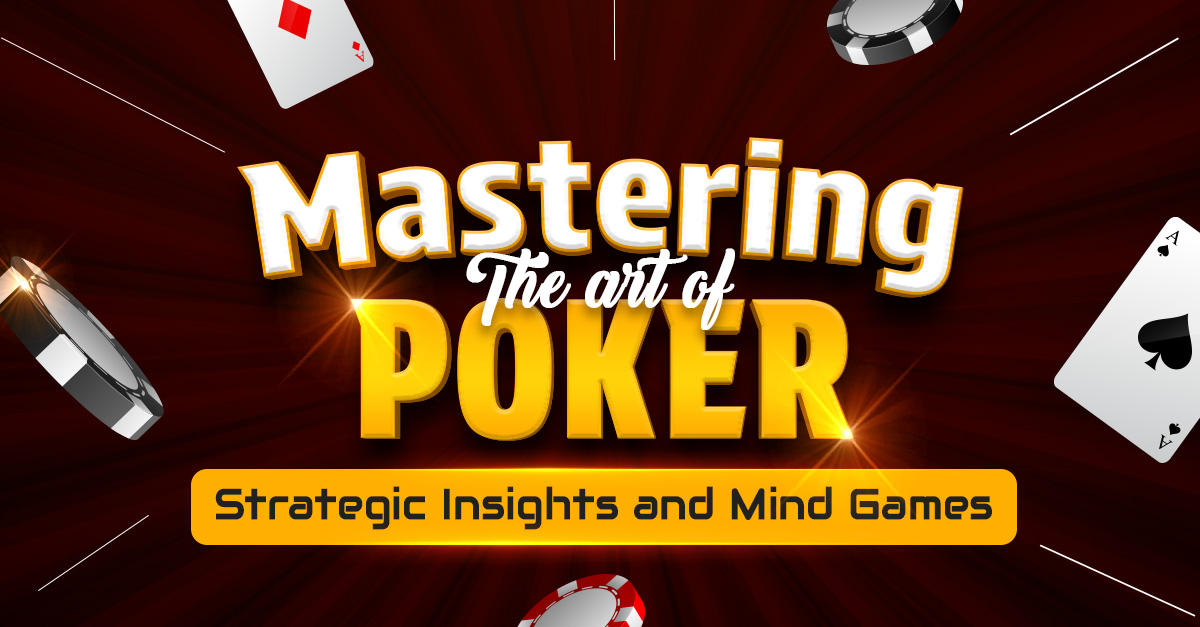In the realm of card games, poker stands as a captivating masterpiece, blending skill, strategy, and the unpredictable nature of luck. To truly excel in this game, one must delve deep into the nuances of poker strategy. This blog is your comprehensive guide to mastering the art of poker, where we will explore strategic insights and delve into the intricate world of mind games that define this classic card game.
Understanding the Foundations of Poker Strategy:
Poker strategy is the backbone of a successful player’s toolkit. In this section, we will break down the fundamental principles that form the bedrock of a solid poker strategy.
Starting Hand Selection:
A crucial aspect of poker strategy is knowing which hands to play and which to fold. We’ll discuss the concept of starting hand selection, understanding the strengths and weaknesses of different hands, and how to adapt your approach based on your position at the table.
Positional Awareness:
Your position in the betting order can significantly impact your decision-making process. From the early positions to the late positions, we’ll uncover the strategic advantages each position offers and how to leverage them to your benefit.
Bankroll Management:
Even the most skilled players can face rough patches. Proper bankroll management is key to weathering the storm and ensuring you’re always in the game. We’ll explore strategies to protect your bankroll and make it grow over time.
Advanced Poker Tactics:
Once you’ve grasped the fundamentals, it’s time to elevate your game with advanced poker tactics. In this section, we’ll explore strategies that can give you a competitive edge at the table.
Bluffing and Deception:
The art of bluffing is synonymous with poker strategy. We’ll delve into the psychology behind bluffing when to deploy this tactic, and how to read your opponents to determine the perfect moment to make your move.
Reading Opponents:
Understanding your opponents is a skill that separates great poker players from the rest. We’ll discuss how to read your adversaries, decipher their playing styles, and exploit their weaknesses to maximize your profits.
Table Dynamics:
Adapting to the ever-changing dynamics of the poker table is essential. We’ll explore how to adjust your strategy based on the playing styles of your opponents, the flow of the game, and other situational factors.
The Mind Games of Poker:
Beyond the cards and chips, poker is a game of psychological warfare. In this section, we’ll unravel the mind games that unfold at the poker table and how to use them to your advantage.
Maintaining a Poker Face:
Your expressions and body language can betray your intentions. We’ll discuss the importance of maintaining a stoic poker face, controlling your emotions, and creating a deceptive aura that keeps your opponents guessing.
Psychology of Betting:
Betting patterns convey information at the poker strategy. We’ll explore the psychology behind different betting actions, including value betting, slow playing, and the strategic use of bet sizing to manipulate your opponents.
Tilt Management:
Tilt, the state of emotional frustration, can be the downfall of even the most skilled players. We’ll provide insights into recognizing tilt, strategies to manage it, and how to turn the tables on opponents who succumb to this emotional rollercoaster.
Conclusion
Congratulations! You’ve embarked on a journey to master the art of poker, armed with strategic insights and a deeper understanding of the mind games that unfold at the virtual felt. As you apply these principles and tactics to your gameplay, remember that poker is not just a game of cards; it’s a dynamic dance of skill, strategy, and psychological prowess. May your chips multiply, and your bluffs leave your opponents in awe as you navigate the thrilling world of poker strategy.
